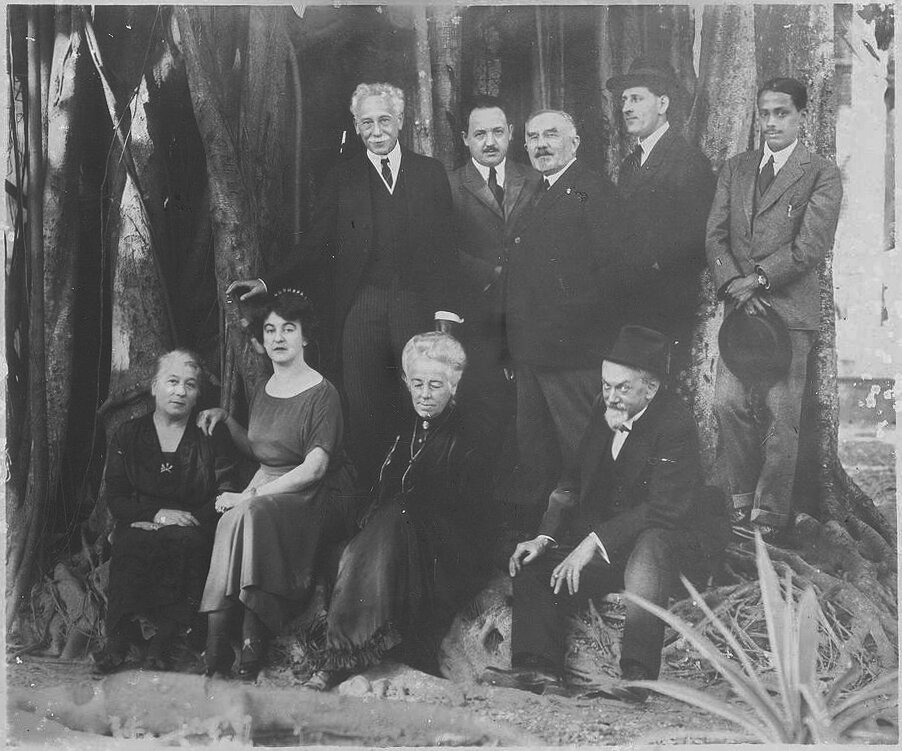Léonard Aurousseau

Léonard Eugène Aurousseau (12 Jul. 1888, Cannes, France — 24 Jan. 1929, Yerres, France) was a French sinologist, historian and archaeologist who was the Director of École française d’extrême-orient (EFEO) from 1926 to 1929.
After studying Chinese language in Paris, he served in Indochina as soldier of the 10th Infantry Regiment in 1909, and joined EFEO two years later, sent in Shanghai and Beijing to complete his studies. In 1913, Gouverneur Général Albert Sarrault asked him to replace Philippe Eberhardt as the private tutor of Emperor Duy Tân (1899−1945) in Hue, then capital city of Annam. During World War I, he served in the French Army in France and Siberia.
Back to Hanoi in 1920, Aurousseau became EFEO professor of Chinese in place of Henri Maspero, traveled to China, Korea and Japan, and succeeded Noël Peri (1865−1922) as EFEO secretary in 1922. It was then that he gave EFEO’s go-ahead to André Malraux for the latter’s infamous expedition to Banteay Srei in Cambodia.
That same year, 1923, with his publication “La première conquete chinoise des pays annamites”(BEFEO 23: 232 – 44), Aurousseau was criticized by Henri Maspero and other scholars for “proposing that the origins of the Vietnamese lay in the Chu conquest of Yue in 333 BC, which led to the migration of refugee Yue populations from their heartland in southeast China into the Red River plains where they assimilated indigenous hunter-gatherers (presumably Hoabinhian) more than a century before the Han incorporated northern Vietnam into the Chinese Empire. The historian Henri Maspero, who attributed the emergence of the Vietnamese state to indigenous development, advised, “It is best, I believe, to let it pass in silence”. Le Thanh Khoi (1955) also had reservations about Aurousseau’s reconstruction. Claude Madrolle likewise rejected the hypothesis, replacing it with his own origin theory that the ancient Viet were the Hoklos of Fujian, coastal corsairs who penetrated. the Red River plains and created a political system to rule the tidal populations there.” [as summarized by Judith Cameron, “Leonard Aurousseau’s Hypothesis Revisited: The Intersection between History and Archaeology”, in Crossing Borders, Selected Papers from the 13th International Conference of the European Association of Southeast Asian Archaeologists, Vol 1, eds Mai Lin Tjoa-Bonatz, Andreas Reinecke & Dominik Bonatz, NUS Press, 2012, ISBN 978‑9971-69 – 642‑9)]
While publishing studies on Vietnam history and poetry translations, he succeeded Louis Finot (1864−1935) as EFEO director in 1926, conducting archaeological works at Trà Kiêu and Angkor, and oversaw the building of the Musée Louis-Finot, in Hanoi, with architect Ernest Hébrard. Completed in 1932, the musuem was to become the National Museum of Vietnam History in 1958.
In November 1928, his state of health forced him to go back to France, where he ended his own life on 24 January 1929.
In this group photograph taken in Hanoi EFEO’s gardens in 1922, standing from left to right: Sylvain Lévi, Léonard Aurousseau, Louis Finot, Paul Demiéville, Prabodh Chandra Bagchi; front row: Mrs Sylvain Lévi, Jeanne Leuba-Parmentier, Ms Lulius Van Goor and Henri Parmentier. (Photo EFEO)

